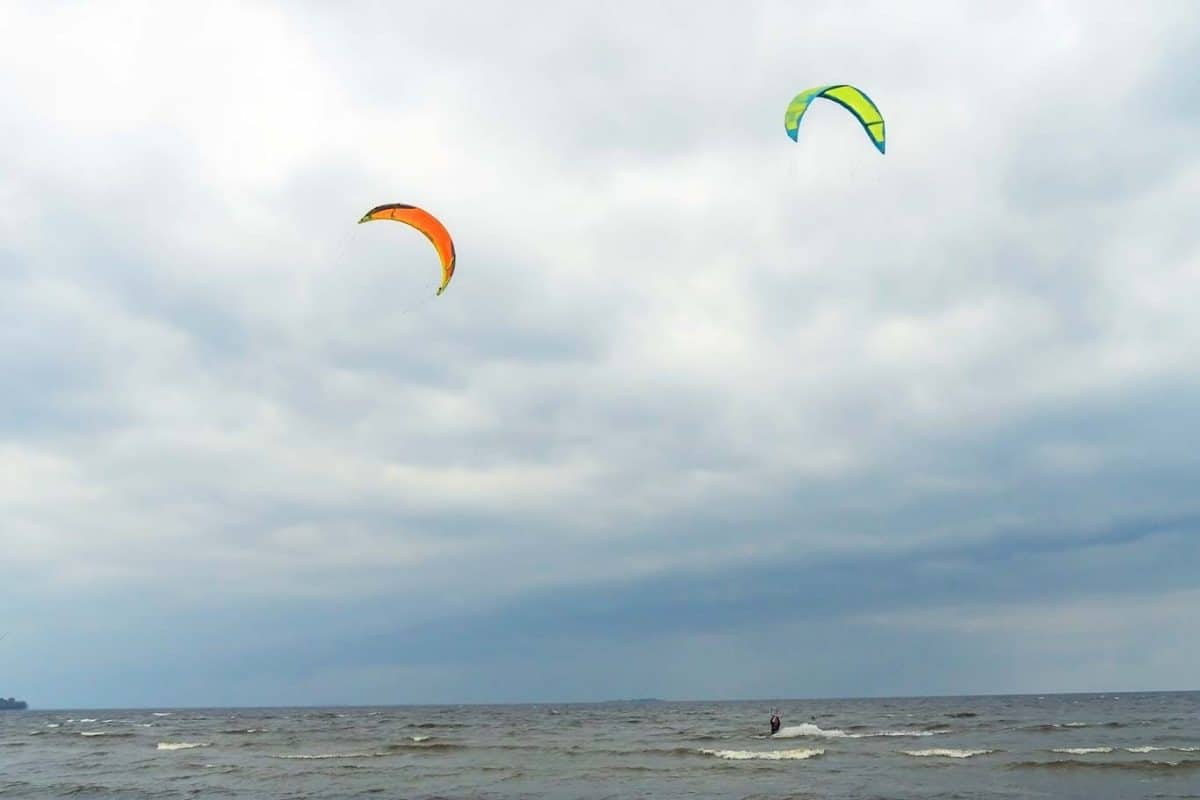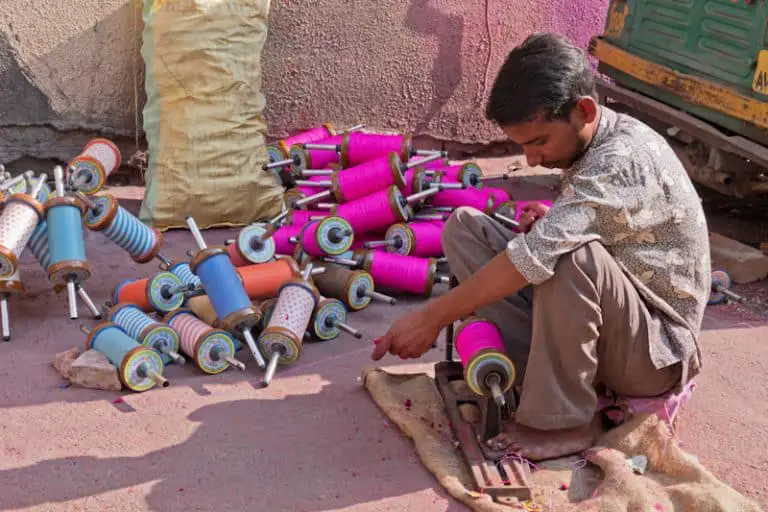Is Saltwater Bad For Kites? (Let’s Find Out)
Is saltwater bad for kites? Kitesurfers are still debating whether they should wash their kite with salt or freshwater. While some say saltwater can damage a kite, some say it can prevent mold and mildew from growing on it.
Saltwater is bad for kites. It can weaken and damage your kite once the salt crystallizes on its surface and becomes abrasive. Saltwater can also ruin the kite lines in the long run.
Is Saltwater Bad For Kites? More Explained
A beach is an ideal place for kitesurfing. The wind allows you to bring your kite to as high as it can get without worrying that it might hang up on trees or power lines.
However, the only problem with flying a kite at the beach is accumulating sand. You will have to wash your kite to remove the sand if such happens.
Some people wash their kites with saltwater since they are on a beach, while some use freshwater instead. The reason is that they think saltwater is bad for kites.
But is salt water bad for kites? To answer this question, let us compare freshwater and saltwater:

Freshwater For Kite Washing
Sand is the biggest kite killer. It works its way into your kite and rubs against the material and stitching. As a result, the structure of your kite weakens as time passes by, causing it to break and tear.
For that reason, people wash their kites with fresh water occasionally.
Washing kites with freshwater will not harm them. However, you should only do the washing process when you do not use the kite for a long time. To do it, rinse the kite with fresh water while carefully brushing away the sand that accumulated in it.
Moreover, it is essential to dry the kite entirely before storing it. The reason is that folding it up when it is still damp will cause mold and mildew to grow. Such can ruin your equipment without you knowing since it is stored away.
That said, the best thing to do is to dry the kite by flying it for a few minutes after washing. This way, you will be able to dry out the cells and fabric of your equipment before storing it.
Saltwater For Kite Washing
Saltwater produces crystals when they dry out. While they may not be as destructive as sand, they can still damage your kite. For this reason, saltwater is terrible for kites. Saltwater can even weaken the lines as it can crystalize inside the sheath of the fibers.
In addition, saltwater can leave debris on the bar and lines of the kite, which can damage them in the long run. That said, you need to wash your kite only with freshwater when you store it for some time. (source)
How Do You Wash A Kite?
Saltwater is bad for kites. So if you go kitesurfing in saltwater, you need to wash your kite with fresh water before it dries out. This way, you will be able to remove the salt from the kite’s surface before it crystallizes.
That said, here are the easy ways to wash your kite after using it:
- Make sure that the kite is completely inflated.
- Wash the kite with fresh water but never use a high-pressure hose. The reason is that the pressure can damage your kite.
- Rinse the canopy lightly to remove grit and sand collected on its surface.
- Let the kite dry away from direct sunlight.
- Ensure no sand and grit are left before storing the kite.
Moreover, you need to ensure that you are drying your kite away from direct sunlight. The reason is that UV exposure can damage your kite when it is out of the water. (source)
How Do You Store Kites?
Since saltwater is bad for kites, you first need to wash them with fresh water before storing them. This way, you can ensure that the salt will not corrode your kite’s fabric and will not weaken its lines. However, freshwater can also damage your kite if you don’t dry it thoroughly before storing it away.
1. Make Sure That The Kite Is Dry
When storing your kite, the first thing you need to do is make sure that none of its parts are damp. Folding your kite while it is still wet can cause mold to grow on it, thus causing damage.
2. Remove Tangles From The Lines
When you go kitesurfing again, the last thing you want to do is detangle your lines painstakingly. Doing this step takes a long time and can even cause damage to your lines. For this reason, it is ideal for detangling your lines before storing the kite way.
3. Fold The Kite For Storage
It would be best if you deflated your kite before folding it. This way, you will be able to fold your kite easily.
It is also essential that you do not fold the kite too tightly. Folding the kite too tightly will cause wrinkling, resulting in microtears in the fibers of the kite. (source)
How Do You Maintain A Kite?
Taking care of your kitesurfing gear will lengthen its lifespan. But more than that, making sure that there is no damage to your kite will keep you safe from any accident. That said, you need to do a regular maintenance check on your kite and all your kitesurfing equipment. This step will ensure that the equipment is in perfect condition for kitesurfing.
Dry Out Your Kite
Saltwater is bad for kites. For this reason, you need to wash your kite with fresh water and let it dry completely before putting it in a storage bag.
However, you only need to wash your kite if you store it away for a long time. If you use your kite again the next day, you only need to let the kite dry before folding it.
Do Not Leave Your Kite Out On The Beach
Letting your kite flip and flap on the sand can cause abrasions. More than that, the wind can also tear the fabric, causing your kite to wear prematurely.
For this reason, always pack your kite carefully after every kitesurfing session.
Keep The Kite Away From Direct Sunlight
The UV rays from the sun can cause your kite’s color to fade away. Additionally, it can weaken the material, which reduces its lifespan. So, it would be best if you always put your kite out of direct sunlight when you are not using it. (source)
How Do You Get Sand Out Of A Kite?
The best way to remove sand from a kite is by washing it. Inflate your kite and carefully clean it with fresh water.
However, never use anything that releases pressure to blow away sand from your kite. The sudden pressure can cause the sand to scour the kite’s fabric. In addition, the pressure itself can cause damage to your kite.
That said, the best thing to do is to use a regular garden hose when washing the sand out of your kite.
Bottom Line
While kites are durable, they are still delicate equipment. For this reason, you need to handle them with care, especially when washing them. This way, you will avoid damaging the kite, thus preserving its lifespan.
Additionally, saltwater is bad for kites. So, in an instance that you went kitesurfing in the ocean and you will store your equipment indefinitely, make sure to wash it with fresh water. Apart from that, you need to regularly check your kite to ensure that it is in perfect condition.
Furthermore, you do not need to wash your kite every time you use it. Instead, wash it when you know that you will not use it for an extended period.
Sources
- Ian Currer, Kitesurfing: The Complete Guide. Profile: Lakes Paragliding, 2002. 91.
- Eric Aguirre, Kitesurfing: The Ultimate Guide. Lulu Press, 2016. 4-5.
- Daniel Plautz, How to Care for Your Kite Equipment (blog), April 9, 2020, https://www.ikointl.com/blog/how-care-your-kite-equipment.






